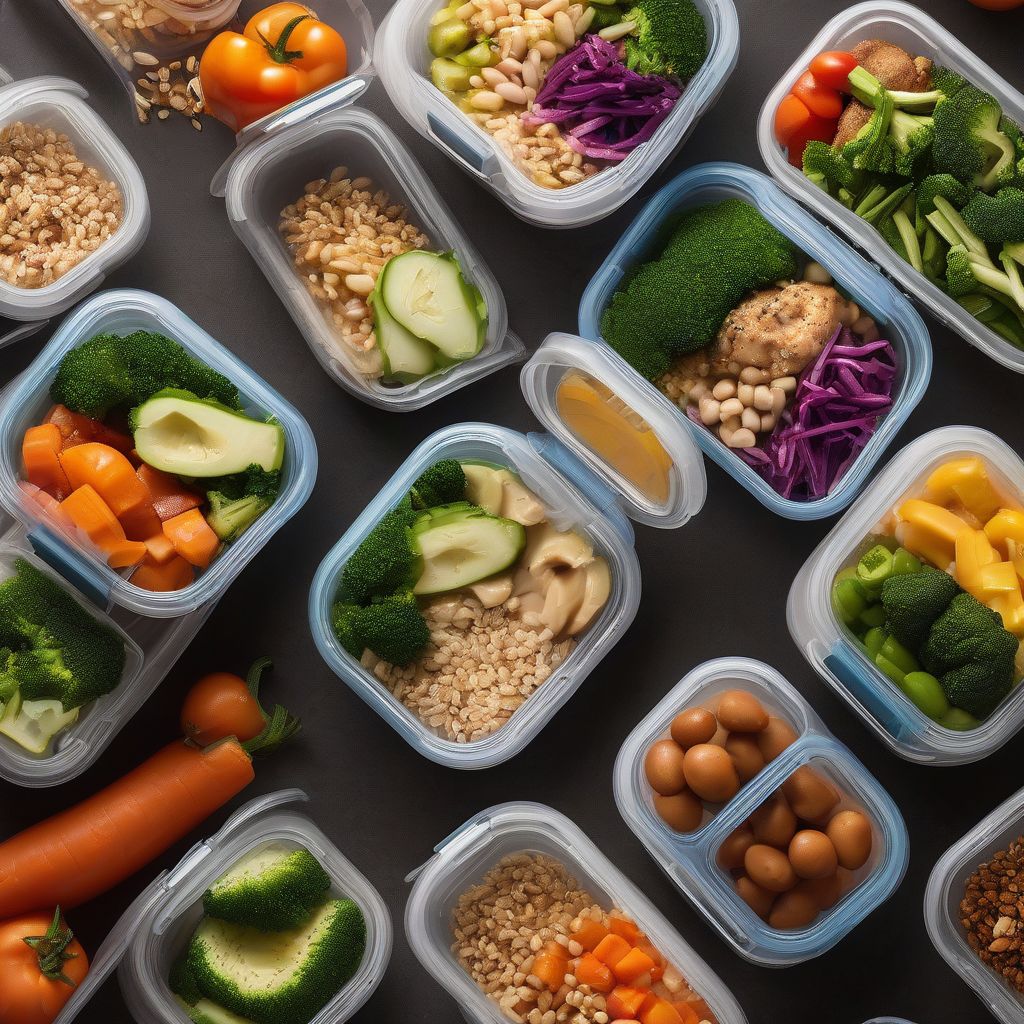Ever dream of enjoying healthy, delicious meals without breaking the bank? It’s a common misconception that clean eating has to be expensive. With a little planning and some smart strategies, you can nourish your body with wholesome foods while sticking to a budget. This guide will show you how to master budget-friendly meal planning for clean eating.
Understanding Clean Eating on a Budget
Clean eating is about consuming whole, unprocessed foods as close to their natural state as possible. It’s not about deprivation or expensive ingredients. It’s about making conscious choices to prioritize nutrient-rich foods. And guess what? Many of the most nutritious foods are also the most affordable!
What is Budget-Friendly Clean Eating?
Budget-friendly clean eating combines the principles of healthy eating with smart shopping and meal planning strategies. It’s about maximizing your grocery budget to get the most nutritional bang for your buck. Think seasonal produce, bulk buying, and clever cooking techniques.
 Budget-Friendly Clean Eating Meal Prep
Budget-Friendly Clean Eating Meal Prep
Why Choose Budget-Friendly Clean Eating?
The benefits are numerous! You’ll improve your health, save money, reduce food waste, and gain a deeper appreciation for simple, wholesome ingredients. “Investing in your health shouldn’t mean emptying your wallet,” says renowned nutritionist, Dr. Emily Carter. “Smart meal planning can make healthy eating accessible to everyone.”
Strategies for Budget-Friendly Clean Eating Meal Planning
Here’s where the rubber meets the road. Let’s dive into practical strategies to make clean eating affordable:
1. Plan Your Meals
Planning is key. A well-thought-out meal plan prevents impulse purchases and ensures you use all your ingredients. Start by creating a weekly menu based on sales and seasonal produce. Consider batch cooking staples like quinoa or brown rice to save time and money.
2. Shop Smart
Grocery shopping can be a budget buster if you’re not careful. Create a detailed shopping list based on your meal plan and stick to it. Compare prices, buy in bulk when possible (especially for non-perishables), and opt for store brands. Farmers markets can also be a great source of affordable, seasonal produce. Remember, frozen fruits and vegetables are just as nutritious as fresh and often cheaper.
3. Embrace Seasonal Produce
Seasonal fruits and vegetables are not only tastier but also more affordable. Visit your local farmers market or check your grocery store’s weekly flyers for the best deals. Incorporate seasonal produce into your meal plan for maximum flavor and savings.
4. Cook at Home More Often
Eating out can quickly drain your budget. Cooking at home allows you to control ingredients and portion sizes, ultimately saving you money and improving your health. “Preparing your meals is an investment in your well-being,” notes Chef Michael Smith in his book, Fast & Fresh.
5. Reduce Food Waste
Food waste is a budget killer. Use leftovers creatively, freeze extra portions for future meals, and compost food scraps. Proper storage and inventory management can significantly reduce food waste and save you money.
6. Prioritize Whole Foods
Focus on affordable, nutrient-rich staples like beans, lentils, brown rice, oats, and seasonal produce. These foods are versatile, packed with nutrients, and easy on the wallet.
7. Embrace Meatless Meals
Meat can be a significant expense. Incorporate more plant-based meals into your weekly plan. Beans, lentils, tofu, and tempeh are excellent sources of protein and fiber and much cheaper than meat.
 Affordable Plant-Based Meals
Affordable Plant-Based Meals
8. Prepare Simple Meals
Don’t feel pressured to create elaborate meals. Simple, wholesome dishes can be just as nutritious and satisfying. Think roasted vegetables, hearty soups, and one-pan meals. These meals are easy to prepare, budget-friendly, and perfect for busy weeknights.
Sample Budget-Friendly Clean Eating Meal Plan
Here’s a sample meal plan to inspire you:
- Monday: Lentil soup with whole-wheat bread
- Tuesday: Chicken stir-fry with brown rice and seasonal vegetables
- Wednesday: Black bean burgers on whole-wheat buns
- Thursday: Roasted chicken with sweet potatoes and broccoli
- Friday: Pasta with marinara sauce and vegetables
- Saturday: Homemade pizza with whole-wheat crust and lots of veggies
- Sunday: Breakfast for dinner (whole-wheat pancakes or scrambled eggs with vegetables)
Conclusion
Budget-friendly clean eating is not a deprivation diet; it’s a smart and sustainable way to nourish your body without breaking the bank. By implementing these strategies, you can enjoy delicious, healthy meals while saving money and reducing food waste. Remember, small changes can make a big difference. Start with one or two strategies and gradually incorporate more as you gain confidence. What tips do you have for eating clean on a budget? Share your thoughts and suggestions in the comments below! We’d love to hear from you. Check out our other resources on healthy cooking on a budget for more helpful tips: Tips for Cooking Healthy Meals on a Budget. Start your journey to a healthier and happier you today!



